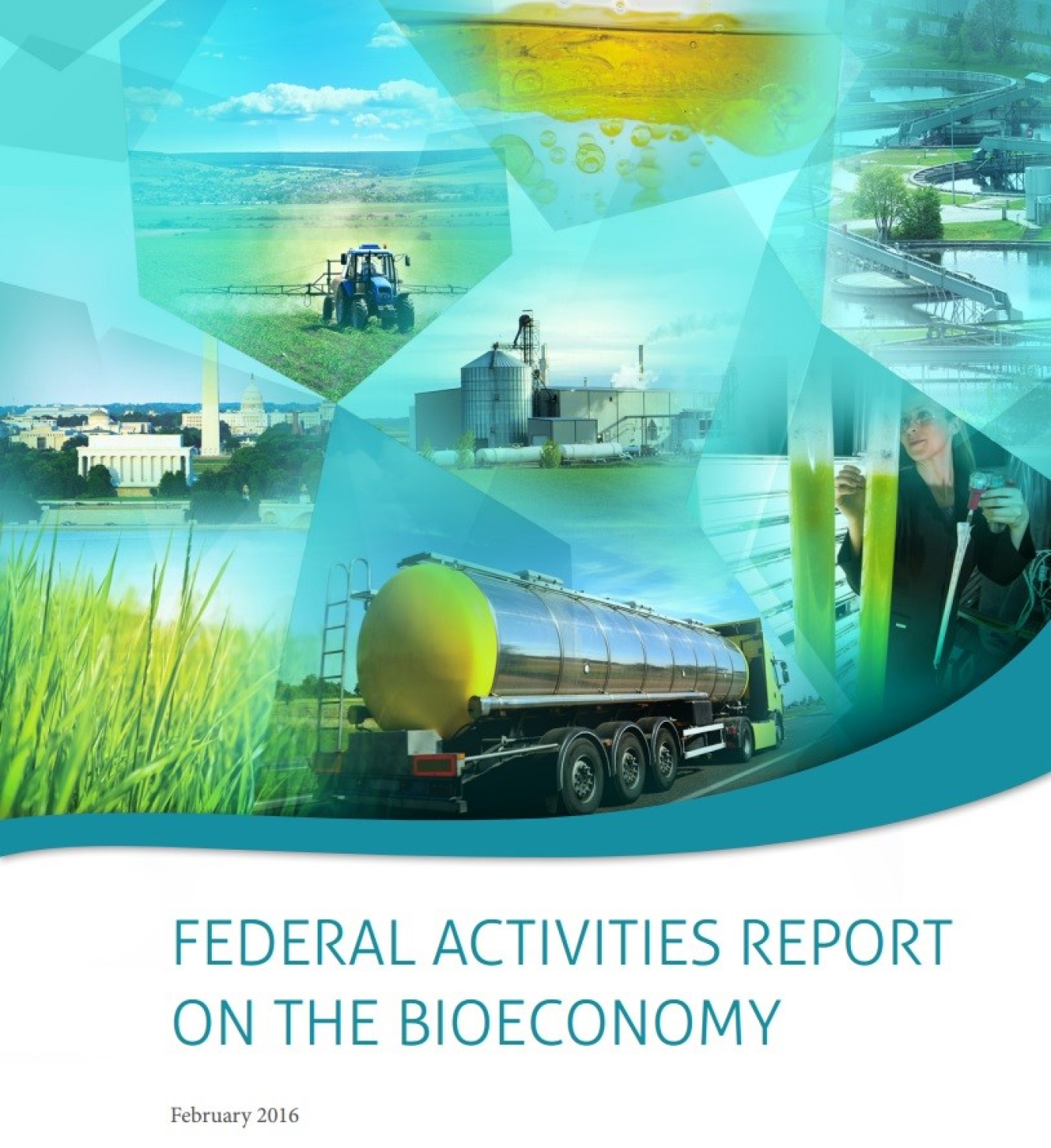
This week at the Advanced Bioeconomy Leadership Conference, the U.S. Department of Agriculture’s (USDA) Chief Scientist, Dr. Catherine Woteki, announced the release of the Federal Activities Report on the Bioeconomy. This report was developed to inform Americans of current federal agency activities that are helping to develop and support what we call the "bioeconomy"--an emerging part of the U.S. economy that relies on renewable biological resources to produce fuels, power, and bio-based products. These fuels, power, and products are produced using biomass--agricultural residues, grasses, energy crops, forestry trimmings, algae, and other sources--instead of fossil fuels.
I am currently on detail at the U.S. Department of Energy’s (DOE’s) Bioenergy Technologies Office (BETO), helping to strengthen the connection between the bioenergy efforts at DOE and USDA. There is already a high level of commitment to collaboration among agencies on bioeconomy efforts, coordinated through the Biomass Research and Development (R&D) Board. However, we see further collaboration as key to our success in transitioning to the bioeconomy.
At DOE, research, development, and demonstration for biofuels is concentrated within BETO and other offices in the Sustainable Transportation sector at EERE. Similar work is done within the Office of Science, the Advanced Research Projects Agency-Energy, and other DOE offices. At USDA, much of our research and development focuses on the production, quality, and integration of feedstocks into commercial agriculture production of food, fiber, and forestry. USDA also has programs and activities that promote end markets for biofuels, heat and biopower, and bio-based products. This work is carried out across many USDA offices. Many bio-based products are already available for purchase, including products certified by USDA’s BioPreferred program. However, others still need technological and/or market development to reduce costs, improve quality and/or performance, such as cellulosic biofuels that can directly replace gasoline.
These efforts are helping us to realize benefits of the bioeconomy. These benefits include reduced greenhouse gas emissions from the transportation sector, diversified U.S. energy options, less dependency on energy imports, and an increase in domestic jobs, especially in rural America. Further, the use of animal waste for biogas, fuel, heat, and biopower production is a proven management technique that can generate additional revenues for farmers. Also, the use of municipal solid waste for renewable energy production can alleviate pressures building on wastewater treatment plants and landfills due to high volume.
DOE’s biomass assessment studies have concluded that we have the potential to sustainably produce one billion tons of biomass in the United States, which could displace 25% of U.S. transportation fuels, 50 billion pounds of bio-based products, and generate 85 billion kWh of electricity. To reach this would mean tripling the size of current U.S. biomass usage. USDA, DOE, and other federal agencies have activities in place that provide a foundation for the existing bioeconomy.
The Federal Activities Report on the Bioeconomy introduces the Billion Ton Bioeconomy Vision—our new, collective vision of what we as a nation could achieve by expanding our efforts to develop the bioeconomy. Moving forward, the Biomass R&D Board will be hosting a series of workshops and webinars to gather input for this vision from stakeholders and the public, which we will release later this year.
We are excited about the release of the Federal Activities Report on the Bioeconomy, and look forward to future collaboration and coordination to achieve our vision.
More by this author
-
 Senior Executive Advisor to the Bioenergy Technologies Office and Director, Office of Energy Policy and New Uses, U.S. Department of Agriculture
Senior Executive Advisor to the Bioenergy Technologies Office and Director, Office of Energy Policy and New Uses, U.S. Department of Agriculture

